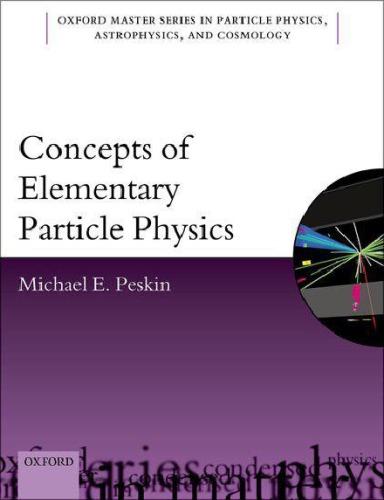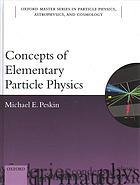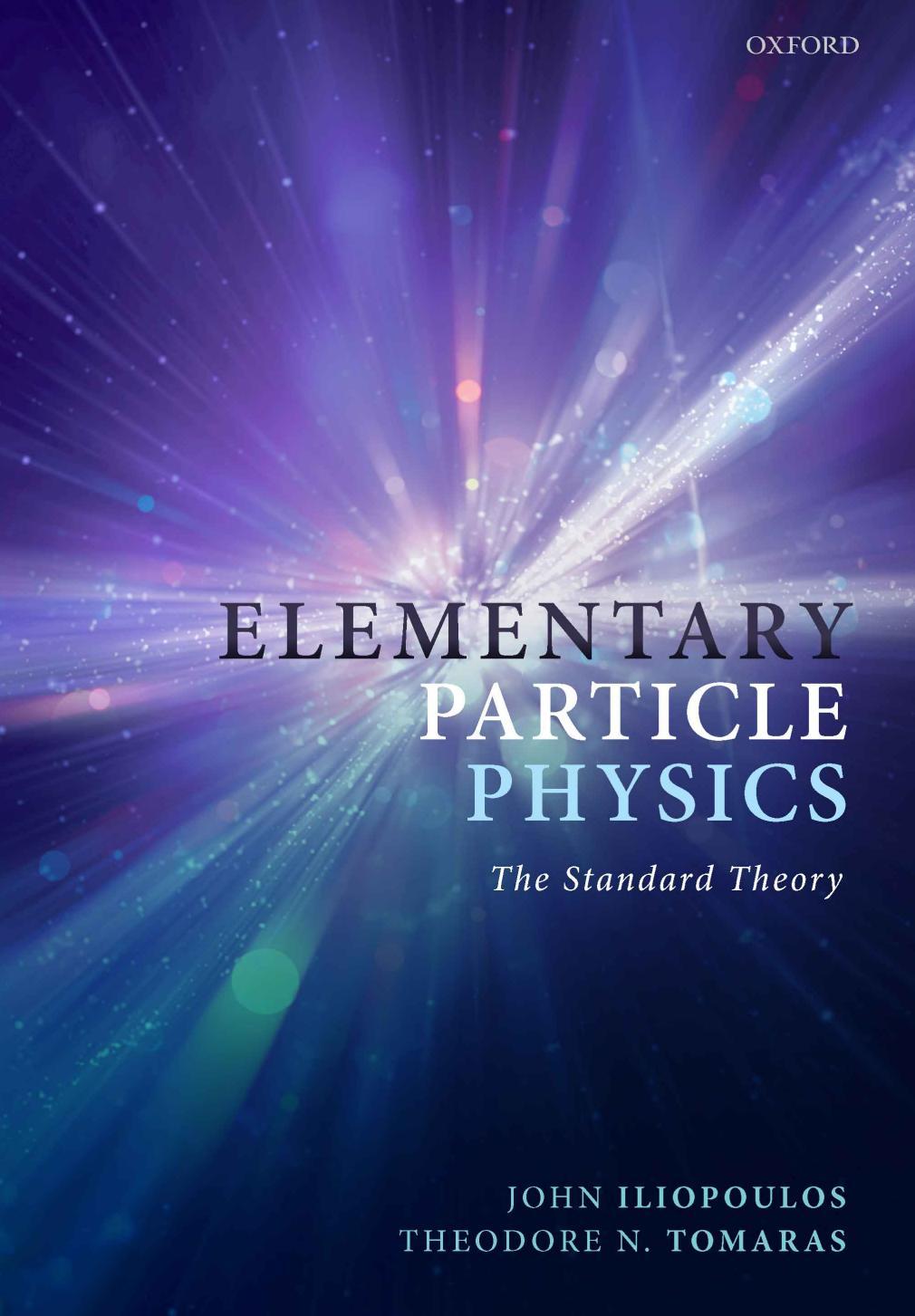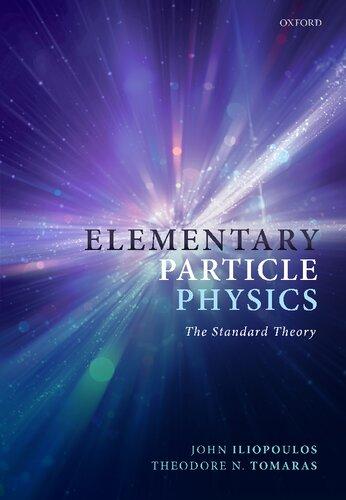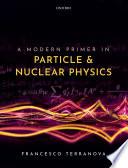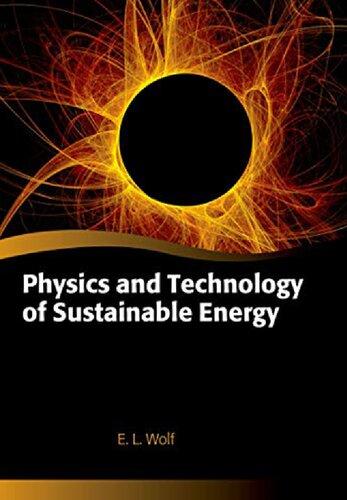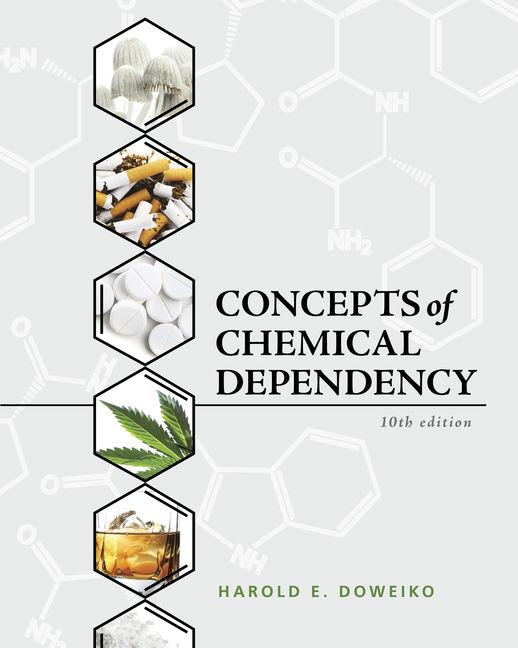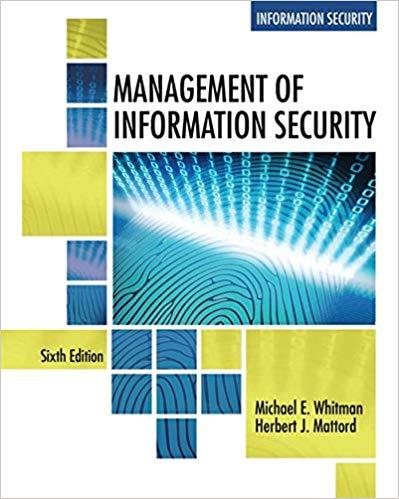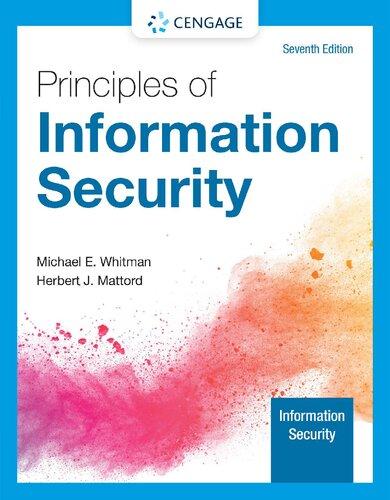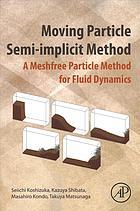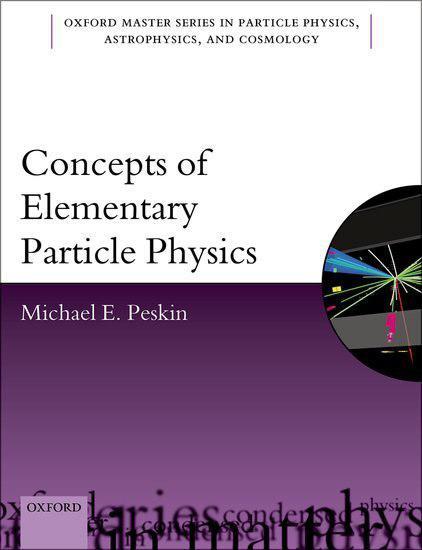Introduction
Theaimofthisbookistodescribetheinteractionsofnaturethatact onelementaryparticlesatdistancesofthesizeofanatomicnucleus.
Atthistime,physicistsknowaboutfourdistinctfundamentalinteractions.Twoofthesearemacroscopic—gravityandelectromagnetism. GravityhasbeenknownsincethebeginningofhistoryandhasbeenunderstoodquantitativelysincethetimeofNewton.Electricalandmagneticphenomenahavealsobeenknownsinceancienttimes.Theunified theoryofelectromagnetismwasgivenitsdefinitiveformbyMaxwellin 1865.Throughallofthesedevelopments,therewasnosignthatthere couldbeadditionalfundamentalforces.Thesewouldappearonlywhen physicistscouldprobematteratverysmalldistances.
ThefirstevidenceforadditionalinteractionsofnaturewasBequerel’s discoveryofradioactivityin1896.In1911,Rutherforddiscoveredthat theatomconsistsofelectronssurroundingaverytiny,positivelycharged nucleus.Asphysicistslearnedmoreaboutatomicstructure,itbecame increasinglyclearthattheknownmacroscopicforcesofnaturecouldnot givethefullexplanation.Bythemiddleofthe20thcentury,experiments hadrevealedaseriesofquestionsthatcouldnotberesolvedwithoutnew particlesandinteractions.Theseincluded:
• Whatisradioactivity?Whydosomeatomicnucleiemithighenergyparticles?Whatspecificreactionsareresponsible?What aretheparticlesthatareemittedinradioactivedecay?
• Whatholdstheatomicnucleustogether?Thenucleusismadeof positivelychargedprotonsandneutralneutrons.Electromagnetic forcesdestabilizethenucleus—asweseefromthefactthatheavy nucleiareunstablewithrespecttofission.Whatisthecounterbalancingattractiveforce?
• Whatareprotonsandneutronsmadeof?Theseparticleshave propertiesthatindicatethattheyarenotelementarypointlike particles.Whatgivesthemstructure?Whatkindsofparticlesare inside?
Experimentsdesignedtostudytheseissuesproducedmoreconfusion beforetheyproducedmoreunderstanding.Theprotonandtheneutron turnedouttobethefirstofhundredsofparticlesinteractingthrough thenuclearforce.Theelectronturnedouttobeonlyoneofthreeapparentlypointlikeparticleswithelectricchargebutnostronginteractions. Alloftheseparticleswereobservedtointeractwithoneanotherthrough awebofnew,short-rangedinteractions.Finally,asthe1960’sturnedto
Thesesimplequestionsgivethestarting pointfortheexplorationofsubnuclear physics.
Itisimportanttorememberthetheory ofparticlephysicsmustbestudiedtogetherwiththeunderstandingofhow experimentsaredoneandhowtheirresultsareinterpreted.
the1970’s,thenewinteractionsweresortedintotwobasicforces—called thestrongandtheweakinteraction—andsimplemathematicalexpressionsfortheseforceswereconstructed.Today,physicistsrefertothese expressionscollectivelyas“theStandardModelofparticlephysics”.
Sometimes,authorsorlecturerspresentthetableofelementaryparticlesoftheStandardModelandimplythatthisisallthereistothe story.Itisnot.Thewaythattheforcesofnatureactontheelementary particlesisbeautifulandintricate.Often,thetellingdetailsofthese interactionsshowupthroughremarkableaspectsofthedatawhenwe examineelementaryparticlebehaviorexperimentally.
Theseideaselicitarelatedquestion:Ofallthewaysthatnaturecould bebuilt,howdoweknowthattheStandardModelisthecorrectone? Itseemshardlypossiblethatwecouldpindowntheexactnatureofnew fundamentalinteractionsbeyondgravityandelectromagnetism.Allof thephenomenaassociatedwiththenewforcesoccuratdistancessmaller thananatomicnucleus,andinaregimewherebothspecialrelativity andquantummechanicsplayanessentialrole.
Inthisbook,Iwillexplaintheanswerstothesequestions.Itturns outthatthenewforceshavecommonpropertiesandcanbebuiltup fromsimpleingredients.Thepresenceoftheseingredientsisrevealed bywell-chosenexperiments.Thedynamicsofthenewinteractionsbecomesmoreclearathigherenergies.Withthebenefitofhindsight,we canbeginourstudytodaybystudyingthesedynamicalingredientsin theirsimplestform,workingouttheconsequencesoftheselaws,and comparingtheresultingformulaetodatafromhighenergyaccelerator experimentsthatillustratethecorrectnessoftheseformulaeinavery directway.
Ourquestforafundamentaltheoryofnatureisfarfromcomplete. Inthefinalchapterofthebook,Iwilldiscussanumberofissuesabout fundamentalforcesforwhichwestillhavenounderstanding.Itisalso possible,asweprobemoredeeplyintothestructureofnature,thatwe willuncovernewinteractionsthatworkatevensmallerdistancesthan thosecurrentlyexplored.But,atleast,onechapterofthestory,open since1896,isnowfinished.Ihopethat,workingthroughthisbook, youwillnotonlyunderstandhowtoworkwiththeunderlyingtheories describingthestrongandweakinteractions,butalsothatyouwillbe amazedatthewealthofevidencethatsupportstheconnectionofthese theoriestotherealworld.
ThebookisorganizedintothreeParts.PartIintroducesthebasic Outlineofthebook. materialsthatwewillusetoprobethenatureofnewforcesatshort distances.PartsIIandIIIusethisasafoundationtobuildupthe StandardModeltheoriesofthestrongandweakinteractions.
PartIbeginswithbasictheorythatunderliesthesubjectofparticle
PartI physics.Evenbeforeweattempttowritetheoriesofthesubnuclear forces,weexpectthatthosetheorieswillobeythelawsofquantum mechanicsandspecialrelativity.Iwillprovidesomemethodsforusing theseimportantprinciplestomakepredictionsabouttheoutcomeof elementaryparticlecollisions.
Inaddition,Iwilldescribethetypesofmatterinthetheoriesof strongandweakinteractions,thebasicelementaryparticlesthatinteractthroughtheseforces.Itturnsoutthattherearetwotypesof matterparticlesthatareelementaryatthelevelofourcurrentunderstanding.Ofthese,onetype,the leptons,areseeninourexperimentsas individualparticles.Therearesixknownleptons.Threehaveelectric charge:theelectron(e),themuon(µ),andthe τ lepton.Theotherthree arethe neutrinos,particlesthatareelectricallyneutralandextremely weaklyinteracting.Despitethis,theevidenceforneutrinosasordinary relativisticparticlesisverypersuasive;IwilldiscussthisinPartIII.
Matterparticlesoftheothertype,the quarks,arehiddenfromview. Quarksappearasconstituentsofparticlessuchasprotonsandneutrons thatinteractthroughthestronginteraction.Therearemanyknown stronglyinteractingparticles,collectivelycalled hadrons.Iwillexplain thepropertiesofthemostprominentones,andshowthattheyarenaturallyconsideredinfamilies.Ontheotherhand,noexperimenthas everseenanisolatedquark.ItisactuallyapredictionoftheStandard Modelthatquarkscanneverappearsingly.Thismakesitespecially challengingtolearntheirproperties.Onepieceofevidencethatthe descriptionofquarksintheStandardModeliscorrectisfoundfromthe factitgivesasimpleexplanationforthequantumnumbersofobserved hadronsandtheirassortmentintofamilies.Iwilldiscussthisalsoin PartI.Intheprocess,Iwillgivenamestothehadronsthatappear mostofteninexperiments,sothatwecandiscussexperimentalmethods moreconcretely.
Inarelativisticquantumtheory,forcesarealsoassociatedwithparticlesthatcanbethoughttotransmitthem.TheStandardModelcontains fourtypesofsuchparticles.Thesearethe photon,thecarrieroftheelectromagneticinteraction,the gluon,thecarriersofthestronginteraction, the W and Z bosons,thecarriersoftheweakinteraction,andthe Higgs boson,whichplaysamoresubtlerole.Youwillhavealreadyencounteredthephotoninyourstudyofquantummechanics.Iwillintroduce thegluoninPartIIandthe W , Z,andHiggsbosonsinPartIII.
Tounderstandexperimentalfindingsaboutelementaryparticles,we willneedtoknowatleastthebasicsofhowexperimentsonelementary particlesaredone,andwhatsortsofquantitiesdescribingtheirpropertiesaremeasureable.IwilldiscussthismaterialalsoinPartI.
PartIIbeginswithadiscussionofthemostimportantexperiments PartII thatgiveinsightintotheunderlyingcharacterofthestronginteraction. Onemightguessintuitivelythatthemostconvincingdataonthestrong interactioncomesfromthestudyofcollisionsofhadronswithother hadrons.Thatisincorrect.Theexperimentsthatweremostcrucialin understandingthenatureofstronginteractioninvolvedelectronscatteringfromprotonsandtheannihilationofelectronsandpositronsathigh energy.Thislatterprocesshasainitialstatewithnohadronsatall. IwillbeginPartIIwithadiscussionofthefeaturesoftheseprocesses athighenergy.Ouranalysiswillintroducetheconceptofthe currentcurrentinteraction,whichisanessentialpartofthephysicsofboththe
strongandweakinteractions.Then,throughaseriesofargumentsthat passbackandforthbetweentheoryandexperiment,wewillexplorethe natureofhadron-hadroncollisionsathighenergy,asrevealedtodayin experimentsattheLargeHadronCollider.
ThefinalchapterofPartIIpresentsourcurrentunderstandingofthe massesofquarks.Itmightseemthatitisstraightforwardtomeasure themassofaquark,butinfactthisquestionbringsinanumberof new,subtleconcepts.Thischapterintroducestheimportantideaof spontaneoussymmetrybreaking,andotherideasthatwillprovetobe essentialpartsofthetheoryoftheweakinteraction.
PartIIIpresentsthedescriptionoftheweakinteraction.HereIwill
beginfromaproposalforthenatureoftheweakinteractionthatuses theconceptofthecurrent-currentinteractionthathasalreadyproven itsworthinthedescriptionofthestronginteraction.Iwillpresent somequitecounterintuitive,andevenstartling,predictionsofthattheoryandshowthattheyareactuallyreproducedbyexperiment.From thisstartingpoint,againindialoguebetweentheoryandexperiment, wewillbuildupthefulltheory.Mydiscussionwillincludetheprecision studyofthecarriersoftheweakinteraction,the W and Z bosons,and thenewestingredientsinthistheory,themassesofneutrinosandthe propertiesoftheHiggsboson.
Thisisnotacompletetextbookofelementaryparticlephysics.In general,IwillconcentrateonthesimplestapplicationsoftheStandard Model,theapplicationsthatmaketheunderlyingstructureofthemodel mostclear.MostoftheprocessesthatIwillconsiderwillbestudiedin thelimitofveryhighenergies,wherethemathematicalanalysiscanbe simplifiedasmuchaspossible.Afulldiscussionofthesubjectwould coveramorecompletelistofreactions,includingsomewhosetheoretical analysisisquitecomplex.Suchafulltreatmentofparticlephysicsis beyondthescopeofthisbook.
Inparticular,manyaspectsofthetheoryofelementaryparticlescannotbeunderstoodwithoutadeepunderstandingofquantumfieldtheory.Thisbookwillexplainthoseaspectsofquantumfieldtheorythat areabsolutelynecessaryforthepresentation,butwillomitanysophisticateddiscussionofthissubject.Afulldescriptionofthepropertiesof elementaryparticlesneedsmore.
Forstudentswhowouldliketostudyfurtherinparticlephysics,there aremanyexcellentreferenceswrittenfromdifferentandcomplementary pointsofview.Ihaveputalistofthemostusefultextsatthebeginning oftheReferences.
Aparticularlyusefulreferenceworkisthe ReviewofParticlePhysics assembledbytheParticleDataGroup(Patrignani etal. 2016).This volumecompilesthebasicpropertiesofallknownelementaryparticles andprovidesup-to-datereviewsofthemajortopicsinthissubject.All elementaryparticlemassesandotherphysicalquantitiesquotedinthis bookbutnotexplicitlyreferencedaretakenfromthesummarytables giveninthatsource.
SymmetriesofSpace-Time 2
Wedonothavecompletefreedominpostulatingnewlawsofnature.Any lawsthatwepostulateshouldbeconsistentwithwell-establishedsymmetriesandinvarianceprinciples.Ondistancescalessmallerthananatom, space-timeisinvariantwithrespecttotranslationsofspaceandtime. Space-timeisalsoinvariantwithrespecttorotationsandboosts,the symmetrytransformationsofspecialrelativity.Manyaspectsofexperimentsonelementaryparticlestesttheprinciplesofenergy-momentum conservation,rotationalinvariance,theconstancyofthespeedoflight, andthespecial-relativityrelationofmass,momentum,andenergy.So far,nodiscrepancyhasbeenseen.Soitmakessensetoapplythesepowerfulconstraintstoanyproposalforelementaryparticleinteractions.
Perhapsyouconsiderthisstatementtoostrong.Asweexplorenew realmsinphysics,wemightwelldiscoverthatthebasicprinciplesapplied inmorefamiliarsettingsarenolongervalid.Intheearly20thcentury, realcrisesbroughtonbytheunderstandingofatomsandlightforced physiciststoabandonNewtonianspace-timeinfavorofthatofEinstein andMinkowski,andtoabandontheprinciplesofclassicalmechanicsin favoroftheverydifferenttoolsofquantummechanics.Bysettingrelativityandquantummechanicsasabsoluteprinciplestoberespectedin thesubnuclearworld,wearemakingaconservativechoiceoforientation.Therehavebeenmanysuggestionsofmoreradicalapproachesto formulatinglawsofelementaryparticles.Someofthesehaveevenledto newinsights:The bootstrap ofGeoffreyChew,inwhichthereisnofundamentalHamiltonian,isstillfindingnewapplicationsinquantumfield theory(Simmons-Duffin2017); stringtheory,whichradicallymodifies space-timestructure,isacandidatefortheoverallunificationofparticleinteractionswithquantumgravity(Zwiebach2004,Polchinski2005). However,themostsuccessfulroutestothetheoryofsubnuclearinteractionshavetakentranslationinvariance,specialrelativity,andstandard quantummechanicsasabsolutes.Inthisbook,Iwillmaketheassumptionthatspecialrelativityandquantummechanicsarecorrectinthe realmofelementaryparticleinteractions,andIwillusetheirprinciples inastrongwaytoorganizemyexplorationofelementaryparticleforces. Thisbeingso,itwillbeusefultoformulatetheconstraintsfromspacetimesymmetriesinsuchawaythatwecanapplythemeasily.We wouldliketousetheactualtransformationlawsassociatedwiththese symmetriesaslittleaspossible.Instead,weshouldformulatequestions insuchawaythattheanswersareexpressions invariant underspacetimesymmetries.Generally,therewillbeasmallandwell-constrained
Representationoftheenergyandmomentumofaparticlein4-vectornotation.
setofpossibleinvariants.Ifwearelucky,onlyoneofthesewillbe consistentwithexperiment.
2.1Relativisticparticlekinematics
Asafirststepinsimplifyingtheuseofconstraintsfromspecialrelativity,Iwilldiscussthekinematicsofparticleinteractions.Anyisolatedparticleischaracterizedbyanenergyandavectormomentum.In specialrelativity,theseareunifiedintoa4-vector.Iwillwriteenergymomentum4-vectorsinenergyunitsandnotatethemwithanindex µ =0, 1, 2, 3,
(2.1)
Iwillnowreviewaspectsoftheformalismofspecialrelativity.Probablyyouhaveseentheseformulaebeforeintermsofrulers,clocks,and movingtrains.Nowwewillneedtousetheminearnest,becauseelementaryparticlecollisionsgenerallyoccuratenergiesatwhichitisessential touserelativisticformulae.
Underaboostby v alongthe ˆ 3direction,theenergy-momentum 4-vectortransformsas p → p ,with
Itisconvenienttowritethisasamatrixtransformation
Inthisbook,unlessitisexplicitlyindicatedotherwise,repeatedindicesare summedover.Thisconventionisone ofEinstein’slesser,butstillmuchappreciated,innovations.
Inmultiplyingmatricesandvectorsinthisbook,Iwillusetheconventionthatrepeatedindicesaresummedover.Then,forexample,I willwrite(2.3)as
omittingtheexplicitsummationsignfortheindex ν.Lorentztrans-
formationsleaveinvarianttheMinkowskispacevectorproduct
Tokeeptrackoftheminussigninthisproduct,Iwillmakeuseof raisedandloweredLorentzindices.Lorentztransformationspreserve themetrictensor
Usingthismatrix,andthesummationconvention,wecanwrite(2.6)as
Alternatively,let q withaloweredindexbedefinedby
Theinvariantproductof p and q iswritten
Toformaninvariant,wealwayscombinearaisedindexwithalowered index.Astheequationsinthisbookbecomemorecomplex,wewill findthistrickveryusefulinkeepingtrackoftheMinkowskispaceminus signs.
AparticularlyimportantLorentzinvariantisthesquareofaLorentz vector,
Beinganinvariant,thisquantityisindependentofthestateofmotion oftheparticle.Intherestframe
IwilluseraisedandloweredLorentz indicestokeeptrackoftheminus signintheMinkowskivectorproduct.Pleasepayattentiontothepositionofindices—raisedorlowered— throughoutthisbook.
Iwilldefinethemassofaparticleasitsrest-frameenergy
ThemassofaparticleisaLorentzinvariantquantitythatcharacterizes thatparticleinanyreferenceframe. (mc 2) ≡ E0 (2.13)
Since p2 isaninvariant,theexpression
istrueinanyframeofreference.
Inthisbook,Iwillwriteparticlemomentaintwostandardways pµ =(Ep,pc)µ or pµ = mc 2 γ(1,β)µ , (2.15) where
Ep = c(|p|2 +(mc)2)1/2 ,β = |p|c Ep ,γ =(1 β2)1/2 . (2.16)
Especially,thesymbol Ep willalwaysbeusedinthisbooktorepresent thisstandardfunctionofmomentumandmass.Iwillrefertoa4-vector with E = Ep asbeing“onthemassshell”.
Toillustratetheseconventions,Iwillnowworkoutsomesimplebut importantexercisesinrelativistickinematics.Imaginethataparticleof mass M ,atrest,decaystotwolighterparticles,ofmasses m1 and m2.In thesimplestcase,bothparticleshavezeromass: m1 = m2 =0.Then, energy-momentumconservationdictatesthatthetwoparticleenergies
Definitionsofthequantities Ep, β, γ associatedwithrelativisticparticlemotion.
Thesekinematicformulaewillbeused veryofteninthisbook.
areequal,withthevalue Mc2/2.Then,ifthefinalparticlesmoveinthe ˆ 3direction,wecanwritetheir4-vectorsas
Thenextcase,whichwillappearoftenintheexperimentswewill consider,isthatwith m1 nonzerobut m2 =0.Intherestframeofthe originalparticle,themomentaofthetwofinalparticleswillbeequal andopposite.Withalittlealgebra,onecandetermine
(formotioninthe ˆ 3direction),where
Itiseasytocheckthattheseformulaesatisfytheconstraintsoftotalenergy-momentumconservationandthat p
satisfiesthemass-shell constraint(2.14).
Finally,wemightconsiderthegeneralcaseofnonzero m1 and m2 Here,ittakesalittlemorealgebratoarriveatthefinalformulae
with
and
wherethekinematic λ functionisdefinedby
Thesethreesetsofformulaeapplyequallywelltoreactionswithtwo particlesintheinitialstateandtwoparticlesinthefinalstate.Itis onlynecessarytoreplace Mc2 withthecenterofmassenergy ECM of thereaction.
2.2Naturalunits
Inthediscussionofthepreviouschapter,Ineededtointroducemany factorsof c inordertomakethetreatmentofenergy,momentum,and massmoreuniform.Thisisafactoflifeinthedescriptionofhigh energyparticles.Ideally,weshouldtakeadvantageoftheworldviewof relativitytopassseamlesslyamongtheseconcepts.Equallywell,our discussionsofparticledynamicswilltakeplaceinaregimeinwhich quantummechanicsplaysanessentialrole.Tomakethebestuseof
quantumconcepts,weshouldbeabletopasseasilybetweentheconcepts ofmomentumandwavenumber,orenergyandfrequency.
Tomakethesetransitionsmosteasily,Iwill,inthisbook,adopt naturalunits, h = c =1 (2.24)
Thatis,Iwillmeasuremomentumandmassinenergyunits,andIwill measuredistancesandtimesininverseunitsofenergy.Forconvenience
Theconventionsthatdefine natural units indiscussingelementaryparticlephysics,IwilltypicallyusetheenergyunitsMeVorGeV.Thiswilleliminateagreatdealofunnecessary baggagethatwewouldotherwiseneedtocarryaroundinourformulae.
Forexample,towritethemassoftheelectron,Iwillwrite not me =0 91 × 10 27gbutrather me =0 51MeV (2.25)
Anelectronwithamomentumoftheorderofitsrestenergyhas,accordingtotheHeisenberguncertaintyprinciple,apositionuncertainty
h mec =3 9 × 10 11 cm , (2.26) whichIwillequallywellwriteas
Naturalunitsmakeitveryintuitivetoestimateenergies,lengths,and timesintheregimeofelementaryparticlephysics.Forexample,the
Naturalunitsareusefulforestimation. lighteststronglyinteractingparticle,the π meson,hasamass mπc 2 =140MeV (2.28)
Thiscorrespondstoadistance h mπc =1 4 × 10 13 cm (2.29) andatime h mπ
Thesegive—withinafactor2orso—thesizeoftheprotonandthe
Thematerialinthisbookwillbeeasier tograspifyoumakeyourselfcomfortablewiththeuseofnaturalunits.This willbothsimplifyformulaeandsimplify manyestimatesofenergies,distances, andtimes. lifetimesoftypicalunstablehadrons.So,theuseof mπ givesagood firstestimateofalldimensionfulstronginteractionquantities.Toobtain anestimateinthedesiredunits—MeV,cm,sec—wewoulddecorate thesimpleexpression mπ withappropriatefactorsof¯h and c andthen evaluateasabove.
Itmaymakeyouuncomfortableatfirsttodiscardfactorsof¯h and c. Getusedtoit.Thatwillmakeitmucheasierforyoutoperformcalculationsofthesortthatwewilldointhisbook.Someusefulconversion factorsformovingbetweendistance,time,andenergyunitsaregivenin AppendixB.
Theintrinsicstrengthsofthebasicelementaryparticleinteractionsarenot apparentfromthesizeoftheireffect— orfromtheirnames.Hereisapreview.
Oneinterestingquantitytoputintonaturalunitsisthestrengthof theelectricchargeoftheelectronorproton.TheCoulombpotentialis giveninstandardnotationby
Iwilluseunitsforelectromagnetisminwhichalso
ThentheCoulombpotentialreads
Since r,innaturalunits,hasthedimensionsof(energy) 1,thevalueof theelectricchargemusthaveaforminwhichitisdimensionless.Indeed,
isadimensionlessnumber,calledthe
,withthe value
Therearetworemarkablethingsaboutthisequation.First,itissurprisingthatthereisadimensionlessnumber α thatcharacterizesthe strengthoftheelectromagneticinteraction.Second,thatnumberis small,signallingthattheelectromagneticinteractionisaweakinteraction.Oneofthegoalsofthisbookwillbetodeterminewhetherthe
strongandweaksubnuclearinteractionscanbecharacterizedinthesame way,andwhethertheseinteractions—lookingbeyondtheirnames—are intrinsicallystrongorweak.Iwilldiscussestimatesofthestrongand weakinteractioncouplingstrengthsatappropriatepointsinthecourse. Itwillturnoutthatthestronginteractionisweak,atleastwhenmeasuredunderthecorrectconditions.Itwillalsoturnoutthattheweak Grouptheoryplaysanimportantrole inquantummechanics,andthisimportanceextendstothestudyofelementaryparticlephysics.Youhave encounteredgrouptheoryconceptsin yourquantummechanicscourse,butit islikelythatthoseargumentsdidnot makeexplicitreferencetogrouptheoryconcepts.Inparticlephysics,we leanmuchmoreheavilyongrouptheory,andsoitisbesttodiscussthese conceptsformallyandgivethemtheir propernames.Please,then,studySections2.3and2.4carefully,especially ifyouareuncomfortablewithmathematicabstraction.Withcarefulreading,youwillseethattheconceptsI describegeneralizephysicalarguments thatarealreadyfamiliartoyou.
interactionisalsoweakindimensionlessterms.Itisweakerthanthe stronginteractions,butnotasweakaselectromagnetism.
2.3Alittletheoryofdiscretegroups
Grouptheoryisaveryimportanttoolforelementaryparticlephysics. Inthissectionandthenext,Iwillreviewhowgrouptheoryisusedin quantummechanics,andIwilldiscusssomepropertiesofgroupsthat wewillmeetinthisbook.Forthemostpart,thesesectionswillreview materialthatyouhaveseeninyourquantummechanicscourse.But, becausetherewillbemanyappealstogrouptheoryconceptsinthis book,itwillbebesttoputtheseconceptsclearlyinorder.Forthis reason,thesetwosectionswillberatherpreciseandformal.Thislevel ofprecisionwillpayoffasweusetheseideasinmanyexamples.
Inquantummechanics,wedealwithgroupsontwolevels.First, thereareabstractgroups.Inmathematics,a group isasetofelements G = {a,b,...} withamultiplicationlawdefined,sothat ab isdefinedand isanelementof G.Themultiplicationlawsatisfiesthethreeproperties Herearetheaxiomsthatdefinea group.
(1) Multiplicationisassociative: a(bc)=(ab)c.
(2) G containsan identityelement 1suchthat,foranyelementof G, 1a = a1= a
(3) Foreach a in G,thereisanotherelement a 1 suchthat aa 1 = a 1a =1.
Everysymmetryofnaturenormallyencounteredinphysicssatisfiesthese axiomsandisdescribedbyanabstractgroup.
Inquantummechanics,thebasicelementsarevectors(or,quantum states)inaHilbertspace.Symmetriesconvertoneofthesestatesto anotherbyaunitarytransformation.Thephysicsproblemweare TheactionofagroupontheHilbert spaceofstatesinquantummechanicsis describedthroughunitaryrepresentationsofthegroup.Thus,unitarygroup representationswillbeusedinmanyaspectsofthephysicsdiscussedinthis book. interestedinisdescribedbyaHamiltonian H whoseeigenvaluesgive theenergylevels.Asymmetryoftheproblemisimplementedbya unitarytransformation U.If[U ,H]=0,stateslinkedby U havethe sameenergy.
ThisrelationbetweensymmetriesoftheHamiltonianandunitaryoperatorsgivesspecialimportancetothefollowingconstruction:Forany group G withelements {a},wecanfindunitarymatrices Ua thatobey themultiplicationlawofthegroup.Thatis,if a,b,c areelementsof G with ab = c,thenthecorrespondingmatricesobey UaUb = Uc (2.36)
bymatrixmultiplication.Inparticular,theunitarymatrixcorrespondingto1isthematrix 1,andtheunitarymatrixcorrespondingto a 1 isthematrix U 1 = U †.Thesetofmatrices {Ua} iscalleda unitary matrixrepresentation ofthegroup G.Thegroup G isasymmetryofthe Hamiltonian H ifthisgrouphasaunitaryrepresentation {Ua} acting ontheHilbertspacesuchthat,forall a,[Ua,H]=0.
Theseideasareeasiesttounderstandinthecontextofasmallset ofquantumstatesthatformafinite-dimensionalHilbertspace.The simplestexampleinvolvestheabstractgroupcalled Z2 thatcontains twoelements {1, 1} satisfyingthemultiplicationlaw
1 1=( 1)( 1)=11 ( 1)=( 1) 1=( 1) . (2.37)
Consider,then,aquantummechanicalsystemwithtwoparticles π+ and π .Definetheoperator C totransform Cπ+ = π,Cπ = π+ (2.38)
Theactionof C onthis2-dimensionalsubspaceisrepresentedbythe matrix
If H istheHamiltonianforthisquantum-mechanicalsystemand[C,H]= 0,thatwouldimplythatthemassesanddecayratesof π+ and π must beequal.OnthesameHilbertspace,wecandefinethetrivialoperation
Thisisrepresentedby
Theunitarymatrices {1,C} formaunitaryrepresentationofthegroup Z2.Ifthesematricescommutewith H,wesaythat H has Z2 symmetry. Wecandiscusstherelationof C to H anditseigenstateswithout makingexplicitreferencetothefactthattheunitarymatrix C represents agroup.However,usingthelanguageofgrouptheoryconnectsthis exampletoothersthatwemighthavestudied.Notallgroupsareas simpletounderstandas Z2,and,themorecomplicatedthegroup,the moreusefulthisconnectionis.
Agroup G iscalled Abelian if,forall a, b in G, ab = ba.Aunitarity representationofanAbeliangroup G consistsofunitarymatricesthat commutewithoneanother.Thismeansthattheycanbesimultaneously diagonalized.Theoperationofthegroupisthenreducedtosimple numbers.Intheexampleabove,thematrices(2.41)and(2.39)are AnAbeliangroupisdescribedbyits eigenstatesandtheireigenvalues.The eigenvaluesarepreciselywhatphysicistscallthe quantumnumbers ofa state.
diagonalizedinacommonbasis.Itisconventionaltouse C alsoasa symbolfortheeigenvalueof C ononeofitseigenstates.Inthiscase, theeigenstatesare
Because C 2 =1,operatingtwicewiththematrix C mustgivebackthe originalstate: CC |ψ = |ψ .Thismust,inparticular,betrueforan eigenstate.Thentheeigenvaluesof C canonlybe ±1.Wesaythatthe firststatein(2.42)has C =+1andthesecondhas C = 1. SymmetriesoftheHamiltonianmayinvolvetransformationsofspacetimecoordinates,suchasthespecialrelativitytransformationsdiscussed inSection2.1.Thesearecalled space-timesymmetries.Intheexamples liketheoneabove,thesymmetryrelatedifferentparticlesorquantum stateswithoutreferencetospace-time.Thesearecalled internalsymmetries.Agivenabstractgroupsuchas Z2 maydescribeaspace-time oraninternalsymmetry.
If G containstwoelements a,b thatdonotcommute, ab = ba,itis calleda non-Abelian group.If G isnon-Abelian,and {Ua} isaunitary representationof G,itisgenerallynotpossibletosimultaneouslydiagonalizealloftheunitarymatricesin {Ua}.However,byachangeof basis,wecanreducethesematricestoacommonblock-diagonalform
C =+1:[ π+ + π ]/√2
C = 1:[ π+ π ]/√2 . (2.42)
wheretheblocks U1,U2,U3, ··· areassmallaspossible.Theseminimalsizeunitarytransformationsrepresenting G arecalled irreducibleunitary representationsof G.Foranirreduciblerepresentation {Ui},thesizeof thematricesiscalledthe dimension di oftherepresentation.Thenotion ofirreduciblerepresentationsisprobablymorefamiliartoyouinthe contextofcontinuousgroups.Iwillputyourknowledgeoftherotation
Theconceptofan irreducible group representation.Manyphysicsproblems inquantummechanicsaresolvedby breakingupalargerHilbertspaceinto irreduciblerepresentationsofanappropriatesymmetrygroup. groupintothiscontextinthenextsection.
Itisastandardmathematicalproblemingrouptheorytoworkout thesetofirreduciblerepresentationsofagroup G thatareinequivalent byunitarytransformations.Itcanbeprovedthat,foradiscretegroup G with n elements,theinequivalentunitarytransformationssatisfy
AnexampleisgivenbythegroupofΠ3 ofpermutationsonthree elements.Wecanrepresentsuchapermutationastheresultoftransformingthesetoflabels[123]toasetoflabelsinanotherorder.With thisrepresentation,thegrouphas6elementsthatcanbewritten
{ [123] , [231] , [312] , [132] , [321] , [213] } (2.45)
Permutationsmultiply ab = c bycomposition,forexample,
[231] · [231]=[312]
[132] · [312]=[321] . (2.46)
Thatis,applyingthetwopermutationsinorder(righttoleft)givesthe resultingpermutationasshown.
The6permutationsin(2.45)canbeassociatedwith6statesina Hilbertspace.Inthisrepresentation,therepresentationmatricesare 6 × 6matriceswithentries0and1.Itcanbeshownthatthisisa reduciblerepresentation.Itcontainstwo1-dimensionalirreduciblerepresentations.Oneoftheseisthetrivialrepresentationthatmultiplies eachelementby1.Anotheristherepresentationthatmultipliesastate by+1foranevenorcyclicpermutation—thefirstthreeelementsof (2.45)—andmultipliesastateby 1foranoddpermutation—thelast threeelementsof(2.45).Thereisalsoone2-dimensionrepresentation, presentedinProblem2.3.Thesethreeirreduciblerepresentationstogethersatisfy(2.44).
2.4Alittletheoryofcontinuousgroups
Theconceptsreviewedintheprevioussectionextendtothesituation ofgroupswithacontinoussetofelements.Importantexamplesare thebasicspace-timesymmetries:thegroupofspatialtranslations,the groupofspatialrotations,andthegroupofLorentztransformations, whichincludesrotationsandboosts.
Theactionofaspacetranslationin quantummechanicsgivesasimpleexampleofaunitaryrepresentationofan Abeliangroup.
Thegroupofspacetranslationshasthesimpleststructure.Alltranslationscommutewithoneanother.Youlearnedinquantummechanicsthattranslationsareimplementedbyunitarytransformations.For translationsby a inonedimension
where P istheoperatormeasuringthetotalmomentumofthesystem. Thisismademostclearbyconsideringthewavefunctionofaplanewave ofmomentum p,
Actingonthestate |p with(2.47),wefind
whichisthesamewavefunctiondisplacedby a.Usingthelanguageintroducedintheprevioussection,wesaythatthesetofunitaryoperators {U (a)} isaunitaryrepresentationofthegroupofspacetranslations.
Theexpressionofeach U (a)asanexponentialimpliesarelationbetweenthegroupoftranslationsandtheHermitianoperator P .We describethisrelationshipbysayingthat P isthe generator of {U (a)} or thegeneratorofthegroupoftranslations.
Thestatementthat P isHermitianisequivalenttothestatementthat the U (a)areunitary, U (a)† =exp[+iaP †]=exp[+iaP ]= U (
Then,continuousunitarytransformationsaregeneratedbyHermitian operators.Inquantummechanics,Hermitianoperatorscorrespondto observables.
Inquantummechanics,everysymmetrythatleavestheHamiltonianinvariantisassociatedwithaconservedquantity.Thisfollowsfromtheconnection betweenHermitanoperatorsandunitarysymmetrytransformations.
Observableshavetime-independentvaluesifthecorrespondingoperatorscommutewiththeHamiltonianofthequantummechanicsproblem. Inthisexample,momentumisconservedif[P,H]=0.Throughthecorrespondence(2.47),thisstatementisexactlyequivalenttothestatement that[U (a),H]=0,thatis,thattheequationsofmotionofthesystem areinvariantundertranslations.Thisrelationiscompletelygeneral.If
Q isaHermitianoperatorontheHilbertspace,thestatementthat Q is aconservedquantity, [Q,H]=0 . (2.51)
isequivalenttothestatementthat Q generatesasymmetryoftheequationsofmotion,
[UQ(a),H]=0for UQ(a)=exp[ iaQ] . (2.52)
Thisisthequantum-mechanicalversionof Noether’stheorem inclassical mechanics:Everysymmetryoftheequationsofmotionisassociated withaconservationlaw,andviceversa.
ThegroupoftranslationsisanAbeliangroup,sincealltranslations commutewithoneanother.Thisimpliesthatallofthematrices U (a)
canbesimultaneouslydiagonalized.Actually,forevery U (a),theeigenstatesof U (a)aretheeigenstatesof P ,thatis,statesofdefinitemomentum.Eacheigenstateof P givesaone-dimensionalunitaryrepresentationofthetranslationgroup.
Anon-Abeliancontinuousgroupthatshouldbefamiliartoyouisthe rotationgroupin3dimensions.Inquantummechanics,rotationsare Theactionofrotationsinquantummechanicsgivesanexampleoftheunitary representationofanon-Abeliangroup. implementedontheHilbertspacebytheunitaryoperators
U (α)=exp[ iα · J] (2.53)
where α givestheaxisandangleoftherotationand J aretheoperatorsofangularmomentum.Theseoperatorssatisfythecommutation
Asinthepreviousexample,theconservationlawofangularmomentumis associatedwiththesymmetryofinvarianceunderrotations. relation
[J i,J j ]= i ijkJ k (2.54)
Itcanbeshownthat,ifHermitianoperators J i satisfy(2.54),theunitary operatorsconstructedfromthemsatisfythecompositionrulesof3d rotations.Thatis,if
(β)U (α)= U (γ) , (2.55) thentherotation γ istheonethatresultsfromrotatingfirstthrough α andthenthrough β.Theoperators J i arethusthegeneratorsof rotations.Infactthecompletestructureofthegroupofrotationsis specifiedbythecommutationrelation(2.54).
Inquantummechanics,finite-dimensionalmatrixrepresentationsof therotationgroupplayanimportantrole.Thequantumstatesofatoms areorganizedintomultipletsofdefiniteangularmomentum,forexample, the2Por3Dstatesofthehydrogenatom.Statesofdefiniteangularmomentumgivethefinite-dimensionalirreduciblematrixrepresentationsof therotationgroup.
Throughthecorrespondence(2.53),afinite-dimensionalrepresentationoftherotationgroupisgeneratedbyasetoffinite-dimensional matricesthatsatisfy(2.54).Thesimplestsuchrepresentationsarethe trivial,1-dimensionalrepresentation
the2-dimensionalrepresentation
where σi arethePaulisigmamatrices σ 1 = 01 10 ,σ 2 = 0 i i
andthe3-dimensionalrepresentation
Thereductionofasetofstatesofan atomwithorbitalandspinangularmomenta( ,s)intostatesoftotalangularmomentum j isanexampleofthe reductionofareduciblerepresentation ofacontinuousgroup—inthiscase, therotationgroup—intoasumofirreduciblerepresentations.
Itisinstructivetocheckexplicitlythat(2.57)and(2.59)satisfy(2.54). Thethreerepresentationsgivenherearethoseofspin0,spin 1 2 ,and spin1.WewillmeettheserepresentationsagainandagainintheapplicationsIwilldiscussinthisbook.Similarly,foreveryintegeror half-integervalue j,thereisasetofthree(2j +1) × (2j +1)matrices satisfyingthesecommutationrelations.Thisisthespin j representation oftherotationgroup.
Oneofthestandardproblemsinatomicphysicsistodecomposea setofquantumstatesintoirreduciblerepresentationsoftherotation group.Forexample,statesofanatommaybelabelledbyorbital
angularmomentum andspinangularmomentum s.Thisgivesaset ofstateswith(2 +1)(2s +1)elements.Thetotalangularmomentum j takesvalues
Since[J,H]=0,eachvalueof j givesasetof(2j +1)stateswiththe sameenergy.InSection4.1,wewilltranslatethisgrouptheoryexercise intoastatementabouttheenergylevelsofthehydrogenatom.
Wecanconsiderthegroupofrotationsin3dimensionsasanabstract groupwhosemultiplicationlawisdefinedbythecompositionofrotations.Thisgroupiscalled SO(3).Similarly,thereisanabstractgroup ofrotationsin d dimensions,called SO(d).Thecase d =2issimple;itis thegroupofrotationsofacircle,anAbeliangroupoftranslationsofan angle φ,with φ identifiedwith(φ +2π).Thisabstractgroupisthesame onethatwemeetwhenweconsiderthegroupofphasetransformations
Thisisatransformationbya1 × 1unitarymatrix,sowealsocallthis group U (1).
General n × n unitarymatricesformarepresentationofanabstract groupcalled U (n).Any n × n unitarymatrixcanbewrittenintheform of(2.47)asgeneratedbyasetof n × n Hermitianmatrices U =exp[ iαata] (2.62)
Thesumover a runsoverabasisof n × n Hermitianmatrices,which contains n2 elements.Oneoftheseelementsistheunitmatrix,
Thismatrixcommuteswithalloftheother ta.Ifweomitthiselement
Definitionofthegroup SU (n). fromthesetofHermitianmatrices,weobtainanon-Abeliangroupof matriceswith n2 1generators,the n × n Hermitianmatriceswithzero trace.Thegroupgeneratedbythese n2 1matricesiscalled SU (n).It isthegroupof n × n unitarymatriceswithdeterminant1.
For n =2,thePaulisigmamatrices(2.58)formabasisforthe2 × 2 tracelessHermitianmatrices.Thus, SO(3)and SU (2)arenamesforthe sameabstractgroup.(Mathematiciansmakeadistinctionbetweenthese groups,butthedifferencewillnotberelevanttothecalculationsdone
inthisbook.)Thisabstractgroupdescribesrotationsinthreedimensions,butitwillalsodescribesomeinternalsymmetriesofelemementary particlesthatwewillmeetinthecourseofourdiscussion.
AcontinuousgroupoftransformationsgeneratedbyHermitianmatrices,intheform(2.62),iscalleda Liegroup.Thecommutationalgebra ofthegenerators ta , Thisequation,whichexpressesthenoncommutingnatureofthegeneratorsof aLiegroup,containsthefullinformationabouttherepresentationsandthe geometryofthegroup.
[ta,tb]= if abctc
(2.64) iscalledthe Liealgebra ofthegroup.Theconstants f abc arecalled the structureconstants oftheLiealgebra.Itcanbeshownthatwecan alwayschooseabasisforthe ta suchthatthestructureconstants f abc are completelyantisymmetricin[abc].Thesedefinitionsstraightforwardly generalizethepresentationthatIhavegivenoftherotationgroupin3 dimension.Inthecaseoftherotationgroup, f abc = abc . (2.65)
Inthesamewayasfortherotationgroup,theLiealgebraofthegeneratorsdeterminesthemultiplicationlawofanytwoelementsofthe group.
Inthisbook,wewillmeetonlyspecialcasesofLiegroups.The particulargroups U (1)= SO(2), SU (2)= SO(3),and SU (3)will haveimportantrolesinourstory.Still,theabstractpropertiesofLie groupswillbeusefultousinunderstandinghowtoapplythesegroups toparticlephysics.IwillintroducesomefurtherformalismofLiegroups whenwewillneeditinChapter11.
2.5Discretespace-timesymmetries
ThesymmetriesofspecialrelativityincludethecontinuoussymmetriesofrotationsandLorentztransformations.Buttheyalsoincludetwo distinctspace-timetransformationsthatleavethemetrictensor(2.7)invariantbutcannotbeconstructedasaproductofcontinuousrotations andboosts.Thiswillturnouttobeanimportantissueforelementaryparticlephysics.AccordingtoNoether’stheorem,conservationof energy-momentumisequivalenttotheinvarianceoftheequationsof motionwithrespecttospace-timetranslations,andtheconservationof angularmomentumisequivalenttotheinvarianceoftheequationsof motionwithrespecttorotationsandboosts.However,thereisnofundamentalprinciplethatimpliesthatextra,discretespace-timetransformationsmustbesymmetriesoftheHamiltonianorthattheconservation ofquantitiesassociatedwiththeseextradiscretesymmetriesmustbe conserved.Thisisaseparatequestionthatinprinciplecanonlybeansweredbyexperiment.WewillseeinPartIIIthattheanswergivento thisquestionisquitesurprising.
Thetwospace-timetransformationsthatarenotpartofthecontinuousLorentzgroupare parity (P )and timereversal (T ).These Minkowskispacehastwoextraspacetimesymmetries: parity P and timereversal T space-timeoperationssatisfy
